HOUSTON – (April 28, 2022) – When COVID-19 limited Cin-Ty Lee’s options for watching migratory birds by day, the Rice University professor began recording them at night. Cataloging the species that call to one another on the recordings is now a serious pastime for Lee, a geology professor who has watched, photographed and drawn birds at Rice for two decades.
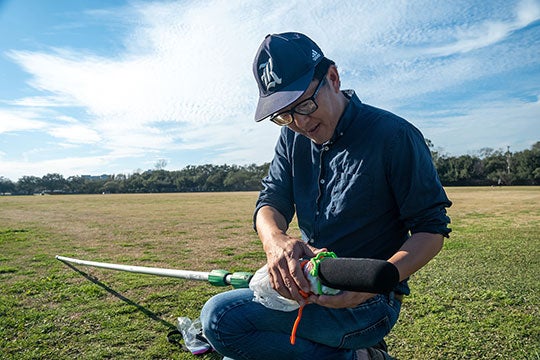
Lee has amassed more than a terabyte of recordings of nocturnal migratory bird calls using a homemade recording setup at Rice. He’s using the recordings in a number of ways, and he’s training other southeast Texas birders to make their own recordings at other locations. The idea is to compare recordings from more than one location to shed light on the little-known habits and patterns of birds that migrate by night.
“It’s purely a hobby,” Lee said. “But it’s just so much fun. It seems like everyone is immediately interested when they learn about what we’re doing. And people are joining in to help out and do recordings themselves.”
Houston is a popular destination for birders because it’s a key stop on one of North America’s busiest migratory bird routes, a flyway that millions of birds follow when flying north for the summer and south for the winter. Lee’s recordings are already offering new insights about the species and number of birds that pass through Houston.
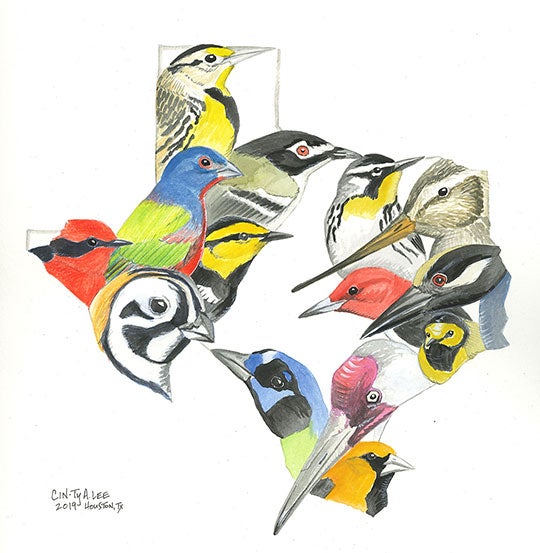
“When people think about Texas for bird migration, they usually talk about High Island and all these colorful, neotropical birds that come up in the spring,” Lee said. “What’s often forgotten is the fall. The flux of birds coming down in the fall is easily more than two times, maybe three times higher than those flying north in spring.
“In the fall you have all the babies, the firstborns, headed down too,” he said. “A lot of them die in this journey south or coming back up. So the numbers drop by the spring when they pass through again. The intensity in the fall doesn’t seem as high to birders because it’s over a longer period of time, a really protracted migration window from August all the way through the end of November. It’s hot and humid, and there are mosquitos. So birders don’t go out as much.”
He should know because he’s been a birder most of his life. Lee got into the sport in junior high school and credits it with turning his life around. At the time, he was struggling both emotionally and academically. Doug Morton, a family friend who would become a lifelong mentor , noticed Lee’s budding interest in birds and began taking him on birding expeditions around Southern California. Lee also collected rocks on the trips, and Morton, a geologist, would explain how they formed.
Lee planned to be an ornithologist, but his fascination with rocks took over in college. He joined Rice in 2002, has won a Guggenheim Fellowship and many other awards for his geological research, and today is the Harry Carothers Wiess Professor of Geology in Rice’s Department of Earth, Environmental and Planetary Sciences.
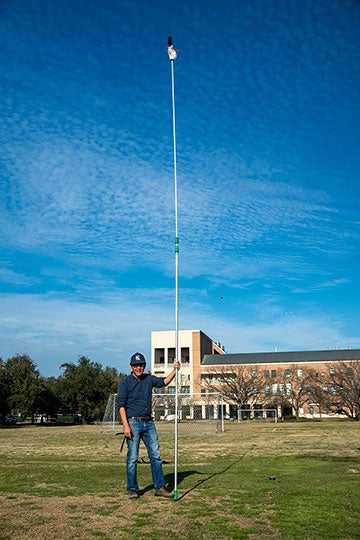
For his nightly bird recordings, Lee mounts an off-the-shelf directional microphone atop a 20-foot pole and points it straight at the sky. He’s learned to identify the calls of dozens of bird species and estimates he can discern the calls of small birds flying as high as 500-600 feet. He can pick out the species of larger birds, like geese and kingfishers, up to altitudes of a quarter-mile. To distinguish between the calls of migrating and stationary birds, Lee’s learned to listen for differences between the calls of approaching and receding birds.
“To really identify, you still have to use the human ear,” he said. “With machine learning, they have apps that can identify bird songs and calls, but for the nocturnal flight calls, there’s just not enough good-quality data for the machine-learning methods.”
Lee said there was a lot of trial and error when he began recording in early 2020. He worked closely with birders Gavin Aquila and Andrew Birch, who’ve made similar recordings in California. The three spent dozens of hours IDing and tallying calls on Lee’s recordings.
“We do it manually, but that doesn’t mean we listen through 1,000s of hours of recordings,” he said. “We visually inspect frequency versus time using off-the-shelf music software. When you see what looks like a call, you listen to it. It takes a lot of practice to get up to speed. Gavin was very good at it and trained me.”
Lee said it also took several months to learn how to make quality recordings.
“We had all sorts of issues and mistakes, like finding the right place to record, where the background noise was low, weatherproofing the equipment, making sure an animal didn’t knock the microphone over,” he said. “We’ve learned a lot. We’re still learning.”
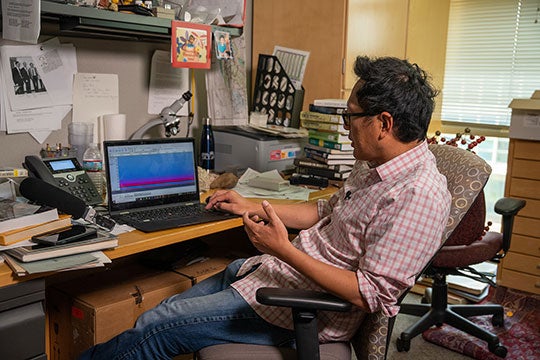
By the fall of 2020, Lee and the others had refined their process so it only about an hour a day to catalog the recordings. Their data wasn’t just plentiful, it was reliable enough to analyze for patterns. Lee said the data was full of surprises. For example, the recordings revealed some birds he’d never seen at Rice as well as species he’d rarely seen.
“A lot of sparrows are somewhat secretive, and we don’t really know exactly what their windows of migration are,” Lee said. “Like LeConte’s sparrows. In 20 years at Rice, I’ve maybe seen three of them. But we got something like 70 LeConte’s sparrows in that one season.”
In February, Lee, Aquila and Birch published an acoustic survey of almost 3,400 nocturnal bird calls in the Bulletin of the Texas Ornithological Society . Based on recordings Lee made on campus between July 7 and Nov. 30, 2020, the survey is the first-of-its-kind for a fall migration in Southeast Texas.
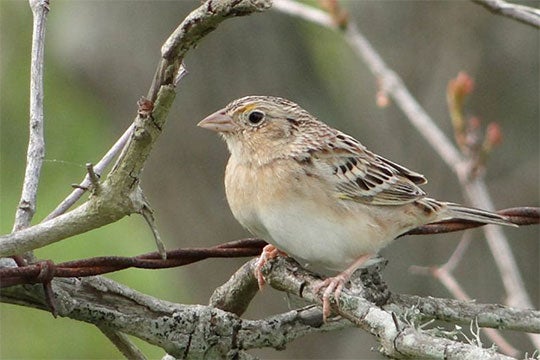
Lee said such surveys are possible because of pioneering work by Cornell University ornithologist Bill Evans, who spent decades building a library of known calls for birds that migrate at night over North America.
“Over the last 30 years, they’ve been trying to identify these nocturnal flight calls,” Lee said. “They would sit around in the dusk or dawn with recorders, and every once in a while they’d get visual confirmation. They slowly built up this library of calls. There’s no way I could have done this without all of that work they had already accumulated.”
In addition to the published study, Lee has used his recordings to add more than 30 species to Birds of Rice University, a list he began in 2002 of bird species observed on the Rice campus. Others have contributed to the list, which numbered 262 in mid-April and is now kept online.
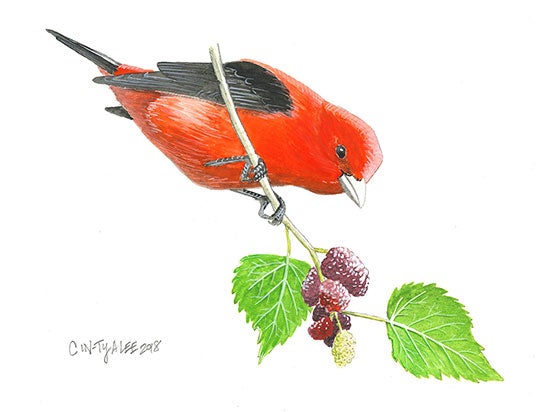
Lee said he’s training other southeast Texas birders to make nocturnal surveys. He’s also working to make the Texas recordings available to the Cornell lab that pioneered the surveys. He hopes the recordings can be incorporated in the training of machine learning programs that could one day take over the time-consuming identification of recorded calls.
Lee also wants to use the surveys to protect birds, w
hose populations have declined by nearly 30% in North America in the past 50 years. For example, the late 2020 recordings point to windows of time when conservation measures could have the biggest impact.
“When they’re flying south, they will ride cold fronts,” Lee said. “They get a good tailwind that helps them to go faster, and they pile up behind the front.
“Within an hour or so after the front has passed, that’s when you start to hear them,” he said. “This is something that we’ll need much more data on, but you’ll get most of them the night of the front, and the numbers drop off very fast. Within two or three nights, nothing’s going. Because they’re blocked by another cold front further up, and you have to wait for it.”
Lee said ornithologists have known about the phenomenon for years, but having data that shows how prominent the effect is over Houston is especially useful for conservation.
“It’s important to know the exact pattern of their arrival and how it’s related to weather,” he said. “If we’re interested in turning off lights to buildings to prevent bird collisions, that sort of granularity in our understanding of these patterns is useful for making recommendations.”
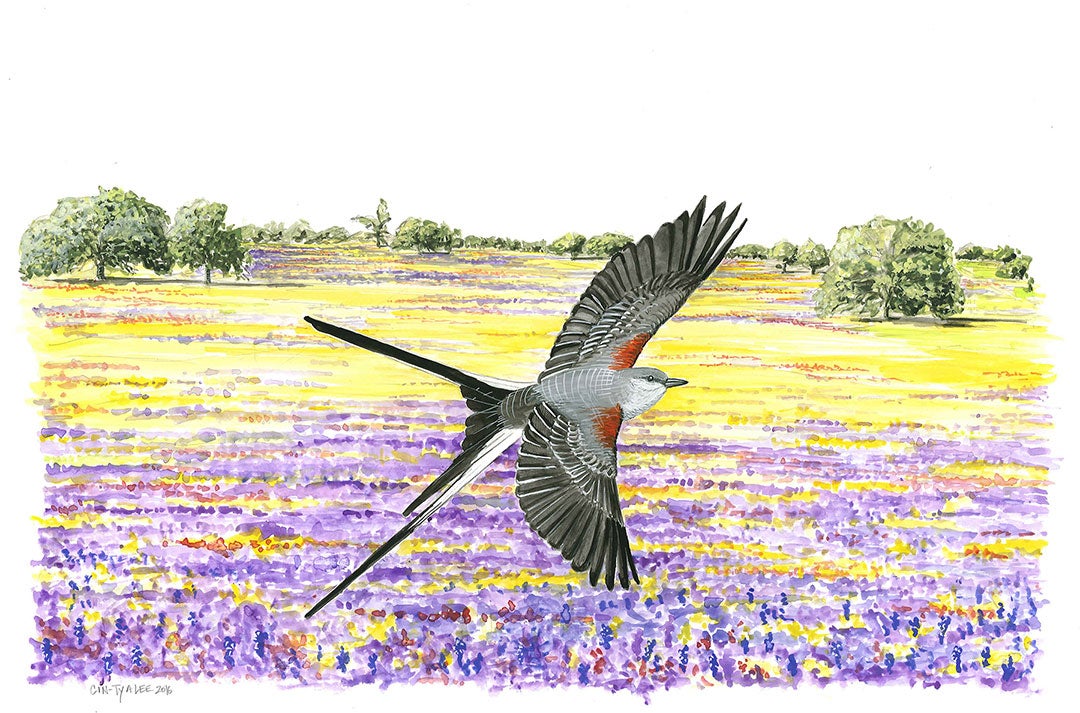
- Peer-reviewed paper
-
“Acoustic survey of nocturnal bird migration at Rice University in Houston, TX during fall 2020,” Bulletin of the Texas Ornithological Society. 54(1-2): 2021
- Video
-
“Capturing bird migration though sound” (Video by Brandon Martin/Rice University)
- Image downloads
-
https://news-network.rice.edu/news/files/2022/04/0502-NIGHTBIRD-bM50-lg.jpg
CAPTION: Professor Cin-Ty Lee, an avid birdwatcher, began recording the nocturnal calls of migratory birds over Rice University during the pandemic. (Photo by Brandon Martin/Rice University)https://news-network.rice.edu/news/files/2022/04/0502-NIGHTBIRD-GhSpw-MK-lg.jpg
CAPTION: Grasshopper sparrow (Photo courtesy of Mark Kulstad)https://news-network.rice.edu/news/files/2022/04/0502-NIGHTBIRD-bM13-lg.jpg
CAPTION: For his new hobby, Rice geologist Cin-Ty Lee uses off-the-shelf music mixing software to quickly pick out and identify bird calls in nightly audio recordings that run from dusk to dawn. (Photo by Brandon Martin/Rice University)https://news-network.rice.edu/news/files/2022/04/0502-NIGHTBIRD-bM72v-lg.jpg
CAPTION: Rice University professor Cin-Ty Lee uses an off-the-shelf directional microphone atop a 20-foot pole to record the calls of migratory birds flying over the Rice campus each night during the fall and spring. He’s learned to identify the calls of dozens of bird species. (Photo by Brandon Martin/Rice University)https://news-network.rice.edu/news/files/2022/04/0502_NIGHTBIRD-TxB-lg.jpg
CAPTION: Painting of 14 colorful bird species observed in Texas by birdwatcher, artist and Rice University professor Cin-Ty Lee. (Painting courtesy of Cin-Ty Lee)https://news-network.rice.edu/news/files/2022/04/0502_NIGHTBIRD-Szr-lg.jpg
CAPTION: Painting of a scissor-tailed flycatcher, a species that migrates through Texas each fall to overwinter in Mexico and Central America. (Painting by of Cin-Ty Lee)https://news-network.rice.edu/news/files/2022/04/0502_NIGHTBIRD-ScT-lg.jpg
CAPTION: Painting of a scarlet tanager, a songbird species that passes through Texas and other Gulf Coast states during annual migrations between breeding grounds in the northeastern United States and wintering grounds in South America. (Painting by Cin-Ty Lee) - About Rice
-
Located on a 300-acre forested campus in Houston, Rice University is consistently ranked among the nation’s top 20 universities by U.S. News & World Report. Rice has highly respected schools of Architecture, Business, Continuing Studies, Engineering, Humanities, Music, Natural Sciences and Social Sciences and is home to the Baker Institute for Public Policy. With 4,052 undergraduates and 3,484 graduate students, Rice’s undergraduate student-to-faculty ratio is just under 6-to-1. Its residential college system builds close-knit communities and lifelong friendships, just one reason why Rice is ranked No. 1 for lots of race/class interaction and No. 1 for quality of life by the Princeton Review. Rice is also rated as a best value among private universities by Kiplinger’s Personal Finance.

